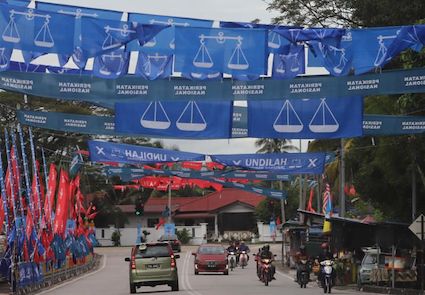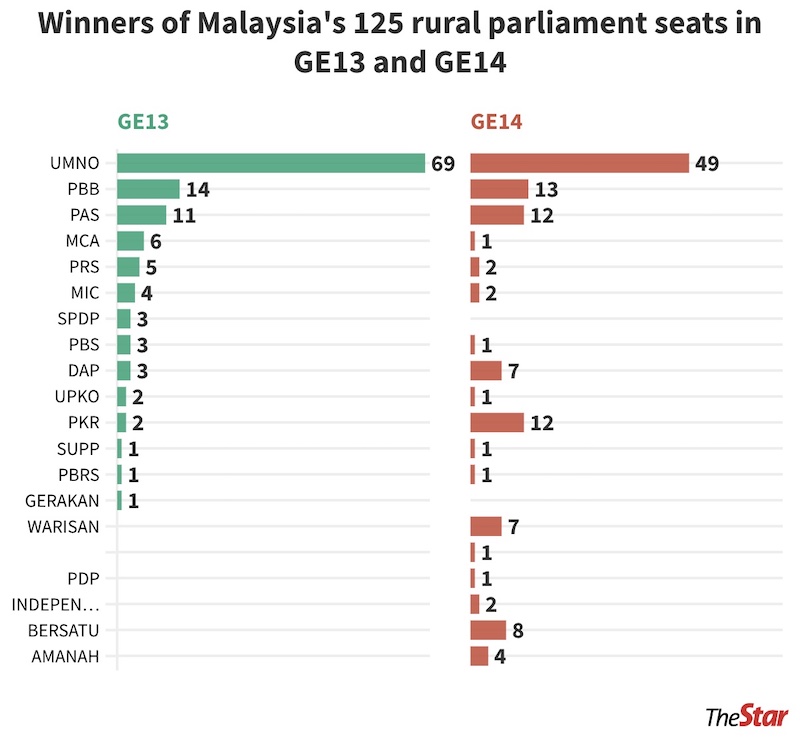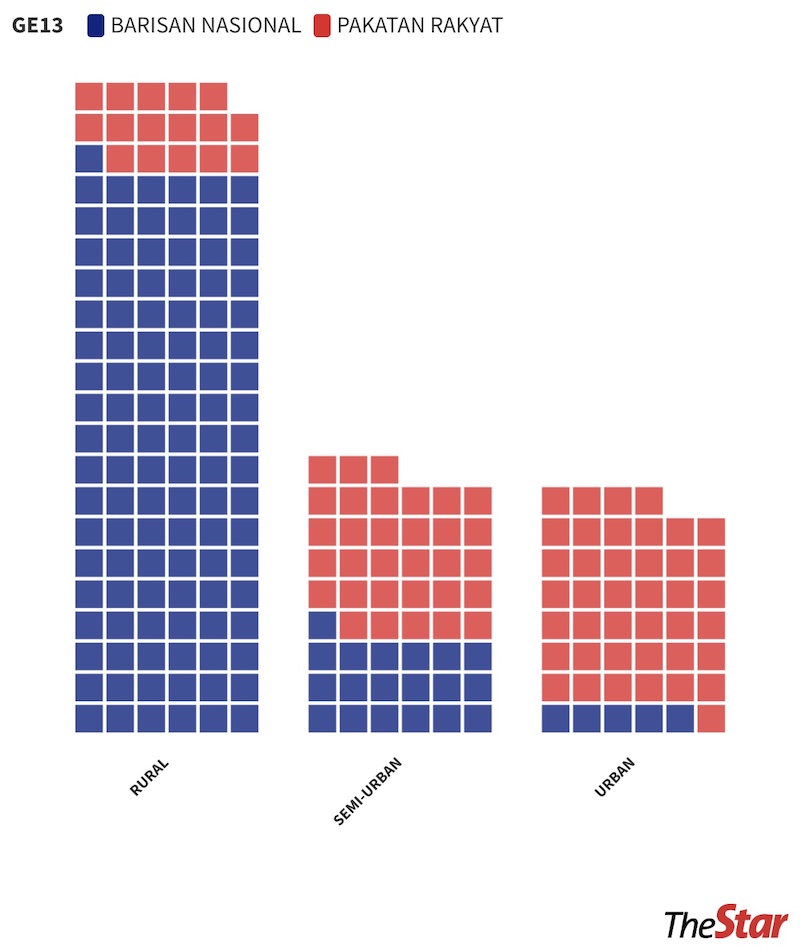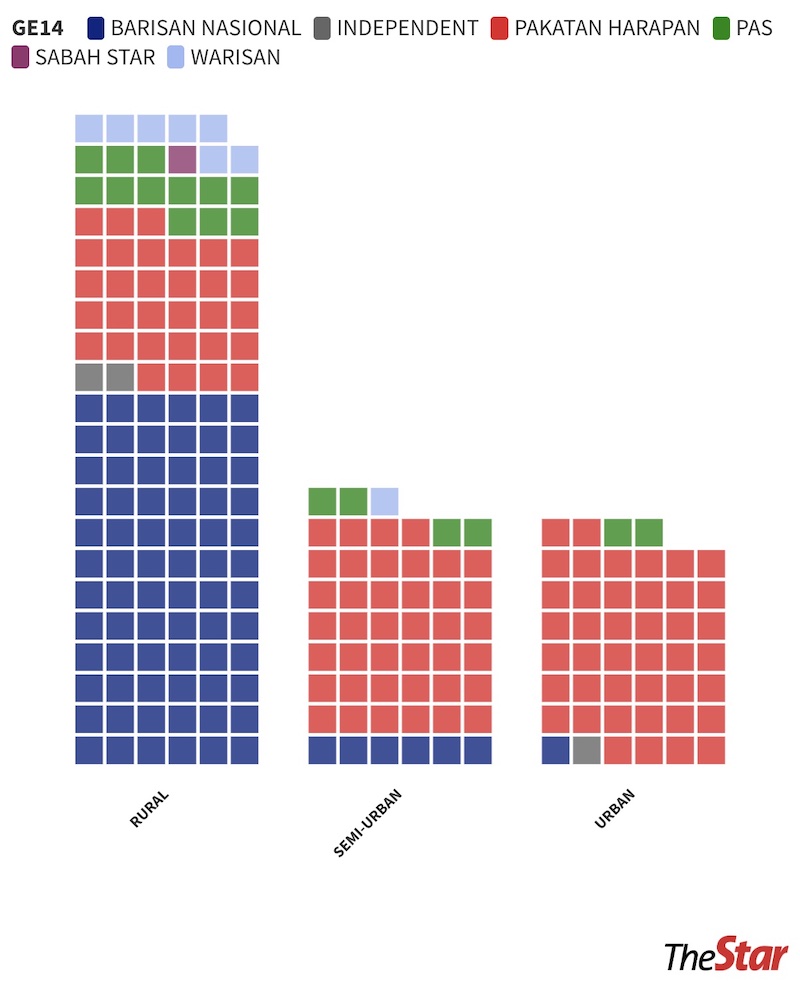INTERACTIVE: In GE15’s battle for rural seats, here is what you need to know

Razak Ahmad, The Star
The fight for Malaysia’s rural parliamentary seats has been intense, and for good reason.
A rural seat typically has fewer voters than an urban seat, but since there are many more rural seats compared with urban ones, the party that does well in the interior has a better shot at securing Putrajaya.
Estimates vary on how many of the 222 parliamentary seats can be classified as rural.
Dr Junaidi Awang Besar from Universiti Kebangsaan Malaysia puts the number of rural seats at 125 (56.3%) with another 51 (23%) classified as semi-urban and the remaining 46 (20.7%) as urban seats.
Ahead of polling on Nov 19, here are some key facts and observations by analysts on how the battle for rural seats has been shaping up.
Pendulum swing in GE15?
Rural seats have long been known as a traditional Barisan Nasional stronghold, but GE14 in 2018 saw an erosion of the coalition’s support, including from rural seats.

In Sarawak, the ruling Gabungan Parti Sarawak (GPS) is expected to maintain a strong showing.
In other states, most rural seats are seeing keen contests that are tough to call.
The maps below show the spread of Malaysia’s rural, semi-urban and urban seats:
What makes a seat rural
The size and number of villages and farms located in a constituency are some of the indicators Junaidi uses to classify a seat as rural.
Semi-urban seats are those located at the fringes of towns and cities, but which may also contain villages.
Urban seats are those with rapid development and where agriculture is not the main economic activity.
Population growth, urbanisation and development means the number of rural seats will gradually go down over time while the number of semi-urban and urban seats will go up.
Malay voters make up the bulk of the electorate in rural seats, which in the peninsula also houses most of the country’s Felda land schemes.
What matters to rural voters
According to Junaidi, two big issues resonate strongly for many Malay rural voters in the peninsula – the politics of development and the politics of identity.
Urban voters, on the other hand, are more swayed by the “politics of values,” driven by issues such as corruption, integrity and accountability, he added.
Rising prices and the impact of a challenging economic outlook on jobs and livelihoods are big concerns that cut across cities and villages alike.
For rural voters, Junaidi expects many will vote for candidates whom they feel can best help ease their burdens.
“Many will choose to support a party they feel can deliver immediate measures, such as pledges of higher cash aid payments for the needy,” he said.
Impact of Undi18 on the rural vote
Younger voters can be divided into two groups, Junaidi said.
The first is made up of those aged 18 to about 23. Most are students, meaning they are financially dependent on their families.
“This group often follow their parents’ political affiliation,” he said.
The second comprises voters aged between 24 and 40. Most already have jobs and are financially independent.
“As a result, many are also independent when deciding whom they should vote for,” he added.
Turnout is key
Barisan lynchpin Umno has a big network of grassroots members and supporters in the Malay heartland that it can rely on for votes.
Some observers believe one reason Barisan won big in last year’s Melaka election and the Johor elections in March this year despite lower turnouts compared with GE14, was that the coalition’s members and supporters came out in force.
However, what happens in the event of a very big voter turnout in rural seats on Saturday remains a question mark.
Dr Azmi Hassan from the Nusantara Academy for Strategic Research said it will come down to which coalition manages to get more of its members and hardcore supporters out on Saturday.
“Undecided voters can also influence who wins, but their influence is stronger in urban seats where their numbers are bigger,” said Azmi.
Impact of a split Malay vote


In GE14 rural voters had a choice between three main players – Barisan, Pakatan Harapan and PAS.
This time around they have four to choose from – Barisan, Perikatan Nasional, Pakatan and Gerakan Tanah Air (GTA).
Dr Muhammad Asri Mohd Ali from Universiti Malaya said many Malay voters see their choice as being either Barisan or one of the other three coalitions.
“As such, I think the split in Malay votes will affect Pakatan and Perikatan more than Barisan,” he said.
As for GTA, Muhammad Asri expects the fledgling coalition led by Tun Dr Mahathir Mohamad to draw support mostly in areas where the former prime minister has a strong following and influence.
Saturday’s election will see whether Barisan can reverse its GE14 losses in rural seats.
For Pakatan’s PKR, Muhammad Asri said that GE15 will see whether the party, whose strength is mainly in urban areas, can retain the rural Malay seats it won in GE14 or even win more.
The coming election will also test the true strength of Perikatan.
“It will be interesting to see whether PAS can retain all its seats, and whether Bersatu (which leads Perikatan) can hold on to its seats where the incumbent MPs were former Umno members,” said Muhammad Asri.

